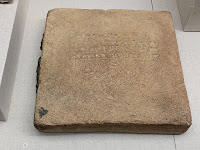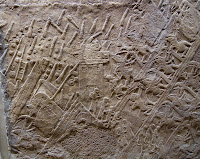This photo displays the oldest known inscription of the name "Yahweh," the personal name of God (cf. Exodus 3). The writing is in hieroglyphs and is dated to c. 1400 BC. The inscription was discovered in the temple built by the Egyptian Pharaoh Amenhotep III in Soleb, which is in modern day Sudan. The text refers to a group of nomadic followers of Yahweh, possibly the Israelites. Click image to enlarge.
PHOTO USED WITH PERMISSION: © Titus Kennedy
PHOTO USED WITH PERMISSION: © Titus Kennedy









































